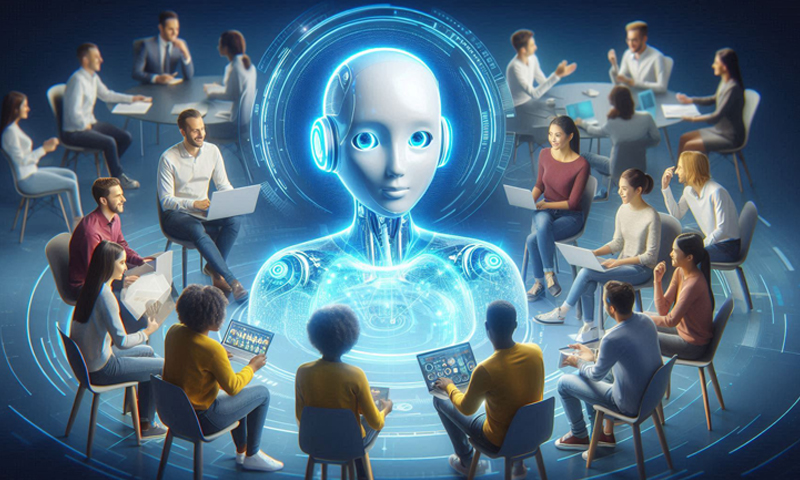The rise of online and blended learning has transformed education, offering new ways for students and professionals to learn beyond traditional classrooms. Technology has broken down geographical and financial barriers, making education more accessible and flexible. As schools, universities, and workplaces adopt digital learning models, it’s crucial to understand the reasons behind this shift, its benefits, and the challenges it presents.
What Is Online and Blended Learning?
Online Learning
Online learning, or e-learning, refers to education delivered entirely through digital platforms. It allows students to access lectures, assignments, and interactive activities from anywhere with an internet connection. Universities, private institutions, and corporations increasingly offer courses, certifications, and degrees online.
Blended Learning
Blended learning combines online instruction with traditional face-to-face teaching. It integrates the best of both worlds: the flexibility of online content and the personal interaction of in-person classes. This model enhances engagement, as students can review digital materials at their own pace while benefiting from in-class discussions and hands-on activities.
The Growth of Online and Blended Learning
The expansion of online and blended learning has accelerated due to several key factors:
1. Technological Advancements
Faster internet, better learning management systems (LMS), artificial intelligence (AI), and interactive digital tools have made online education more effective. Platforms like Coursera, Udemy, and edX offer thousands of courses from top universities, making high-quality education widely available.
2. Changing Workforce Needs
The job market demands continuous learning and upskilling. Professionals turn to online courses to stay competitive, learn new skills, and earn certifications without leaving their jobs. Employers also use e-learning to train employees efficiently.
3. Pandemic-Driven Acceleration
COVID-19 forced schools and businesses to adopt remote learning overnight. While initially a necessity, this shift revealed the potential of online education, leading many institutions to permanently integrate digital learning options.
4. Increased Accessibility
Online education removes geographical limitations, enabling students from remote or underserved areas to access quality education. It also benefits individuals with disabilities by offering customizable learning formats like audio lectures, captions, and screen readers.
Benefits of Online and Blended Learning
1. Flexibility and Convenience
Students can learn at their own pace, balancing education with work, family, and personal commitments. This is particularly beneficial for adult learners and working professionals.
2. Cost-Effectiveness
Online courses often cost less than traditional education because they eliminate expenses like commuting, housing, and printed materials. Many free or low-cost courses provide valuable knowledge without financial burden.
3. Personalized Learning
Adaptive learning technology allows students to receive customized content based on their progress and learning style. AI-powered platforms provide recommendations, quizzes, and feedback to enhance individual learning experiences.
4. Access to Global Expertise
Students can take courses from prestigious universities and learn from world-class educators without relocating. Online learning also fosters diverse learning communities where students from different countries collaborate.
5. Enhanced Engagement Through Multimedia
Videos, simulations, gamified learning, and virtual reality (VR) make learning interactive and enjoyable. These tools improve comprehension and retention compared to traditional lectures.
Challenges and Considerations
Despite its advantages, online and blended learning present some challenges:
1. Digital Divide
Not all students have reliable internet access or digital devices. This gap creates inequalities in education, particularly in low-income communities. Governments and institutions must invest in bridging this divide.
2. Lack of In-Person Interaction
Some learners struggle without face-to-face communication. Blended learning mitigates this by incorporating in-person elements, but fully online students may miss networking opportunities and peer collaboration.
3. Self-Discipline and Motivation
Online learning requires strong time management skills. Without structured schedules, some students may struggle to stay engaged or complete courses. Gamification, mentorship, and interactive forums help address this issue.
4. Quality Assurance and Accreditation
Not all online courses maintain high educational standards. Some lack accreditation, making their certificates less valuable. Learners should research institutions and course credibility before enrolling.
The Future of Online and Blended Learning
The expansion of online and blended learning will continue as technology evolves. Trends such as artificial intelligence, virtual reality classrooms, and blockchain-based credentials will further reshape education. Governments, institutions, and businesses must collaborate to ensure quality, accessibility, and inclusivity in digital learning.
As the education landscape shifts, students and professionals should embrace these new opportunities for learning and growth. Whether through online courses, blended programs, or lifelong learning initiatives, digital education is here to stay.











